True Stories
Page 34 of 42
 Vancouver 32
Vancouver 32
“I sail single-handed & after 20,000 nm have absolute faith in the wee beastie.”
From: William Marshall
Sent: Thursday, May 13, 2010 1:21 PM
To: Valerie
Subject: Windvane replacement
Hello Valerie
I have had a VXA2 unit on my UK built Vancouver 32 for the last 20 years & it’s a wonderful friend.
I sail single-handed & after 20,000 nm have absolute faith in the wee beastie.
Last summer I was safely anchored for the night in Inishboffin Island (W. Ireland) and in the morning, after a gale, the Windvane Frame was gone!! Are you able to give me a price for a replacement Windvane Frame and Cover. (I live in the UK near Falmouth.)
I enclose a pic of the Hydrovane doing its duty off the west of Ireland.
Many thanks for your help.
Best wishes
Bill
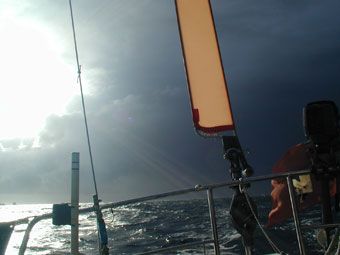
 Van de Stadt 50 - 25 Tons, Steel
Van de Stadt 50 - 25 Tons, Steel
“If you could have seen how it kept us going to windward at 7.5 knots in mountainous seas with 40 knots of wind off of the Cape of Good Hope with an extremely difficult landfall, you would have been impressed. We were!”
“This view was not only expressed by me but the rest of my family on board.”
From: YACHT AMOK – JONES
Sent: May-14-10 4:57 PM
To: John Curry
Subject: AMOK – My New Best Friend
Hi John and Team
Congratulations – your piece of kit got AMOK at 25 Tons and 50 ft of steel safely from Falmouth, UK to Simon’s Town in South Africa without incident.
We took the windward route via Canaries, Cape Verde Is, Ascension Is, St Helena, and Simon’s Town via Cape of Good Hope: about 95% going to windward.
The weather was extreme 38 gusting 42 knts off of Spain for 5 continuous days and a steady 40 knts plus coming around the bottom part of Africa for 4 days. Needless to say we got the waves to match particularly off of the Cape of Good Hope (serious sailors only down there).
After quite a few days of getting to know one another, the hyrovane and I are now friends. We have worked out our differences and now both understand what needs to be done to control 25 tons of steel, 50 ft long. Once that initial period was over we kept challenging it with harder tasks.
If you could have seen how it kept us going to windward at 7.5 knots in mountainous seas with 40 knots of wind off of the Cape of Good Hope with an extremely difficult landfall, you would have been impressed. We were!
So well done for a fantastic product.
Our only problem we had, which was finger trouble is that we lost two retaining pins when taking the rudder off in port, yes we had them tied off?? Allegedly.
Thanks again
kind regards
Mike Jones, AMOK
From: YACHT AMOK – JONES
Sent: May-18-10 7:30 AM
To: John Curry
Subject: RE: AMOK – My New Best Friend
Hi John
No problem at all, you are welcome to post.
Our comments regarding the Hydrovane are honest and as a result of the intense focus that comes from being in an extremely exposed position with your family and realising that the item of equipment performs beyond what could be reasonably expected. There are not too many items of equipment that fall into that category.
This view was not only expressed by me but the rest of my family on board.
For your records we tended to operate the system with minimum vane sensitivity and maximum gearbox power. AMOK is a very powerful Van der Stadt design, getting the balance right was paramount to the success of the system. We were interested to note that with changing environmental conditions both up and down were able to change the boat balance without any alteration to the vane set up. I think the new enlarged rudder was also an important factor in the success particularly with our boat.
We are now residing in Perth, Western Australia
We will be returning to the boat in Simon’s Town, S.A in November and bringing it across to Fremantle over Xmas. A chance to try the system in the Roaring Forties?
Kind regards
Mike, Laura, Pandora (16) and Toby (15)
AMOK crew
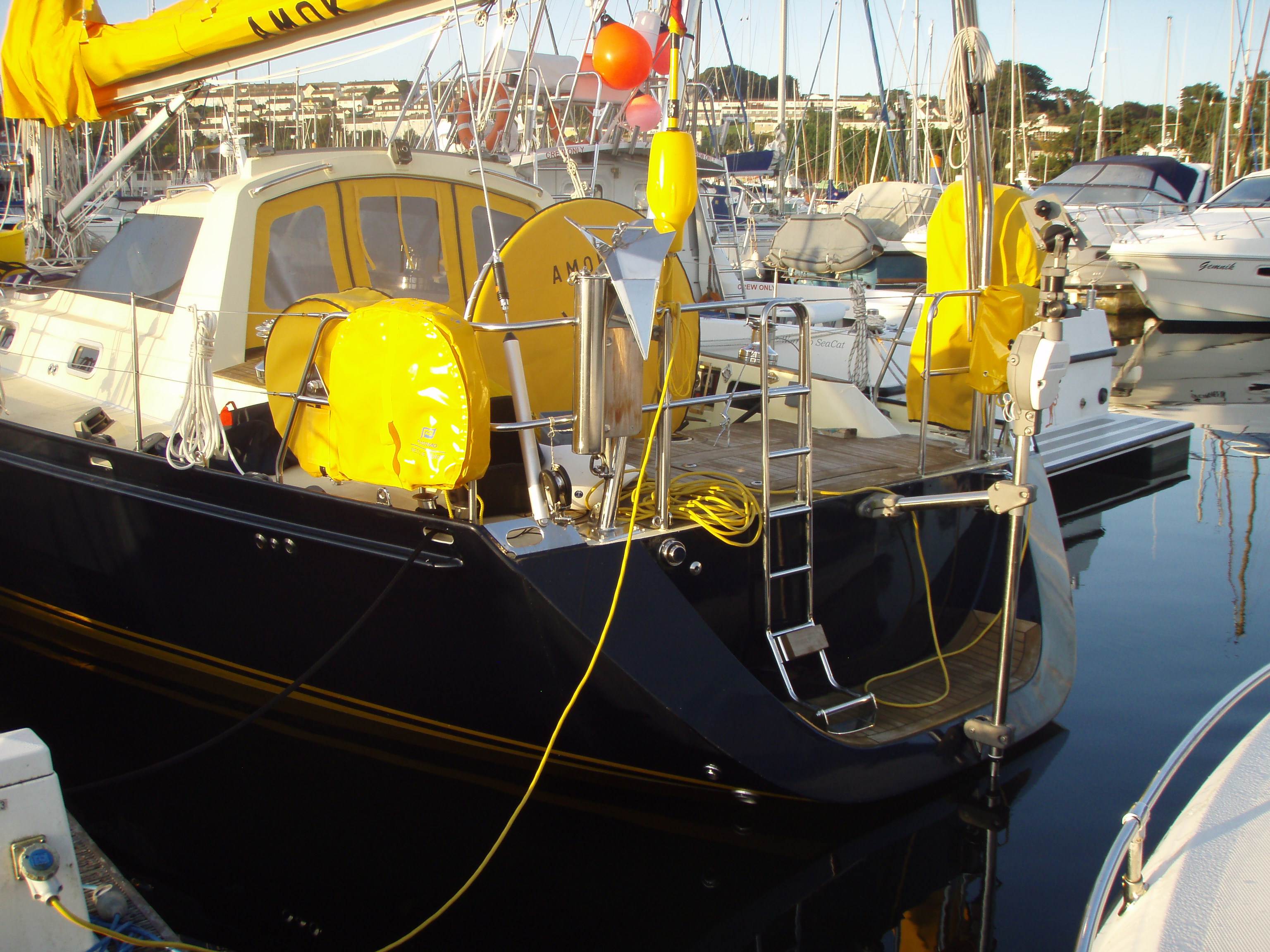
 Koopmans Victoire 1044
Koopmans Victoire 1044
Link and a description of Hydrovane installation – in dutch!
From: Erik Staal
Sent: Thursday, May 06, 2010 1:34 PM
To: Valerie Williams
Subject: Re: Extra covers for stubby Hydrovane
Hi Valerie,
I did place a link and a description of the installation of the Hydrovane on my weblog. We are preparing an Atlantic Circle sailing trip. It is in Dutch, but if you’re interested the link is:
Regards,
Erik
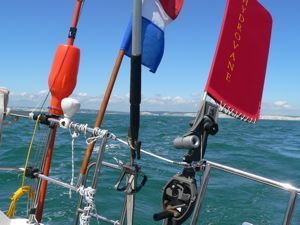
 Cascade 36 - Transpac prep
Cascade 36 - Transpac prep
“The boat is good, the Hydrovane is perfect!”
From: AJ Goldman
Sent: May-12-10 11:00 AM
To: will@hydrovane.com
Subject: From AJ!
Hi Will,
Thanks again for all your help, you are the man! I am always impressed on how quickly you can identify a problem and come up with a solution.
Here is my notes from the last trip:
All is well. COG 228 true, speed 6.5 knots, winds 18-22
I got the shit kicked out of me leaving the gate. Sustained 28 knots, gusting to 35. I had to head down more a bit more than I wanted, but the boat was happiest there. In fact, I’m on the way to Kuai! Well, I better turn around soon. Will head home, be back Monday.
Near the last marker, one big swell/wave hit me broad side and went entirely over the boat! It felt liked I was under a waterfall!
The dolphins love me! They have found me three times during the trip. No whales, fine by me!
The boat is good, the Hydrovane is perfect! I set the course, balance the rig, and just move the lever over to position 1, far left. It then takes over, quietly, with very little effort. I use the stubby vane and it steers my 40 foot boat along perfectly! The system never seems to be out of control and it does not seem to mind the big swells and wind. I plan to use the Hydrovane about 98% of the time between San Francisco and Hawaii!
Last story, a tanker changed course to get closer to me, I swear! It really pissed me off! I had him tracked for over twenty minutes on AIS before I saw him, I was well clear, and he turned. I hate those big things!
It is really cold at night! Tell the other guys to bring warm clothing.
Second Verse, signing off.
AJ
Contact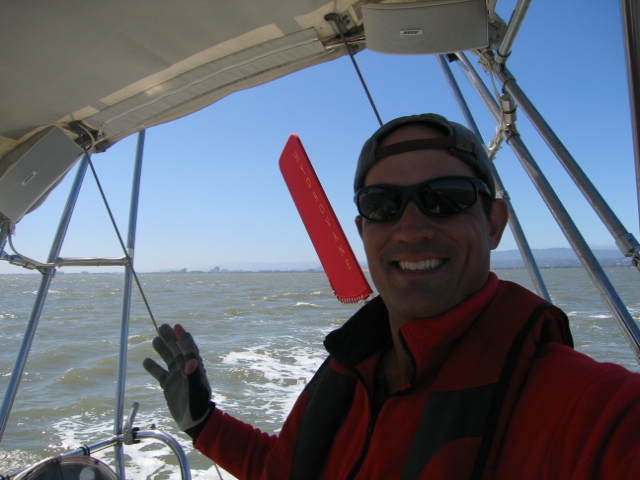
 Amazon 37
Amazon 37
“We have sailed 1 1/2 times around the world with our hydrovane as our only autopilot.”
From: Bud Carney
Sent: Monday, May 03, 2010 3:41 AM
To: Valerie
Subject: Rudder for Invictus IV
Dear Valerie:
We have sailed 1 1/2 times around the world with our hydrovane as our only autopilot. It has been near perfect and we can’t get along without it.
Now we’re in Turkey and the company we had paint our boat appears to have lost our rudder. If we have to order a replacement can you let us know the cost, shipment time, etc. thank you.
Thanks again,
Leo (Bud) and Kathy Carney
 Marcon 34
Marcon 34
“Hydrovane performed impeccably throughout, especially on the 1500 mile trip back from Horta to Falmouth where, 500 miles north of the Azores, the wind came round from a gentle southerly to hard on the nose and we spent the next week beating into a NNE F7 gusting F8 towards home.”
From: Michael Lynch
Sent: May-06-10 3:01 AM
To: Will Curry
Subject: Thanks for your support
Hi Will,
Thanks for the very helpful and efficient service in replacing my wind vane cover. The old one has lasted more than 10 years now and apart from a small repair to an accidental tear, it is still in one piece but beginning to look a bit thin after years of good use.
My wife and I always sail short-handed, and reckon that Hydrovane is the best piece of kit on our 5 ton 1982 Marcon 34ft Bermudan Sloop, ‘IANTHINA of Plymouth’. We use it constantly, even for short trips. Last weekend [30/4 to 3/5/10] our shakedown cruise for the new season took us from Falmouth to Fowey and back. Although only a short round trip of about 50 miles, we still preferred to use Hydrovane over our wheel mounted mechanical auto-helm. The trip back had us on a dead run for the first part from Fowey to Dodman Point with winds from F3 increasing F5. Hydrovane held a beautiful course allowing us to goose-wing all the way. From Dodman Point to St Anthony’s Head the wind moved from the starboard quarter to abeam and increased to F7, again Hydrovane performed excellently as we flew along touching 8 knots at times. Rounding St Anthony’s Head to enter Falmouth we were faced with a beat into 30+ knot winds – no problem for Hydrovane!
A couple of years ago we sailed the circuit Falmouth – La Coruna – Lisbon – Algarve – Bay of Cadiz – Azores – Falmouth and only ever touched the wheel on entering and leaving harbour. Hydrovane performed impeccably throughout, especially on the 1500 mile trip back from Horta to Falmouth where, 500 miles north of the Azores, the wind came round from a gentle southerly to hard on the nose and we spent the next week beating into a NNE F7 gusting F8 towards home. Hydrovane kept a good course, was simplicity itself to operate, and gave us not a moments concern.
We also like the confidence of knowing that in Hydrovane we also have a most capable auxiliary rudder should our main steering ever fail.
Thanks for a brilliant product.
Mike & Jackie Lynch
‘IANTHINA of Plymouth’
Falmouth, Cornwall, UK
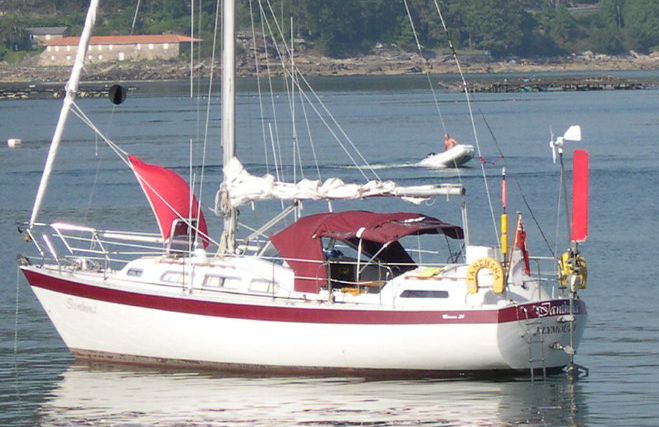
 Whitby 42
Whitby 42
“I left NC for the Virgin Islands on Nov 29, 2009. The offshore leg to Culebra was 1250 miles. Weather varied from 35 knots on stern quarter in 10-12 ft seas in Gulfstream to becalmed.”
“I steered a total of 4 1/2 hours during the entire trip. The Hydrovane was wonderful. With a heavy full keel boat like the Whitby it does a remarkable job.”
From: Jerald Waldorf
Date: Wed, Mar 24, 2010 at 3:34 PM
Subject: Great Product
To: John Curry
Hi John,
I purchased a Hydrovane last year for my Whitby 42. I left NC for the Virgin Islands on Nov 29, 2009. The offshore leg to Culebra was 1250 miles. Weather varied from 35 knots on stern quarter in 10-12 ft seas in Gulfstream to becalmed. I steered a total of 4 1/2 hours during the entire trip. The Hydrovane was wonderful. With a heavy full keel boat like the Whitby it does a remarkable job. It has exceeded my expectations.
I purchased a Autohelm tiller pilot so i could steer under power or if need drive the pilot in downwind conditions. I have not actually used this arrangement except to verify it works to my expectations. I recently fouled the mizzen sheet on the protruding arm for the tiller. It broke off midway the black plastic transition piece and promptly fell overboard. I had $150 in machine work to adapt the tiller to the pilot while missing the stern rail. Such is life.
Thanks
Jerry Waldorf
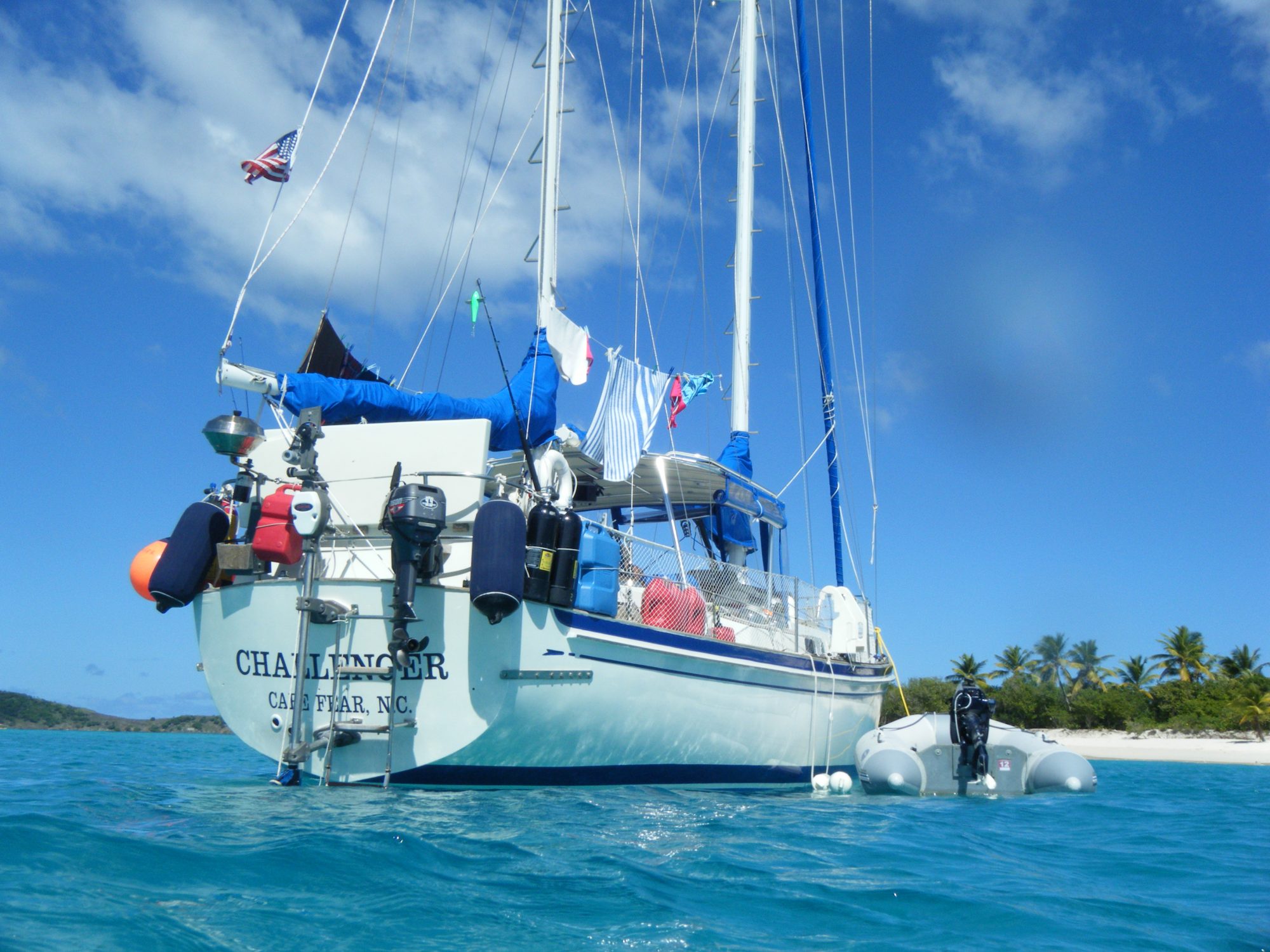
 Ohlson 38 Yawl
Ohlson 38 Yawl
“The Hydrovane worked well during our Atlantic crossing running downwind in F5-F8 with, at times, a large following sea. Very pleased with its performance.”
From: Andy Warman
Sent: Friday, March 12, 2010 4:36 PM
To: Valerie Williams
Subject: Request for quotation
Hi Valerie,
We need a new Tiller (Part 23 – I think?) for our Hydrovane, we managed to snap the original one, and would like to check the price.
Look forward to hearing from you.
Regards
Andy Warman
s/y Spruce Prince Rupert Bay – Dominica
PS The Hydrovane worked well during our Atlantic crossing running downwind in F5-F8 with, at times, a large following sea. Very pleased with its performance. Also the watermaker has been working well, the last time we took water from shore side was 1st December 2009 in the Cape Verde Islands.
 T40 - www.oceangybe.com
T40 - www.oceangybe.com
“By the end of March 2007, the three of us were feeling very very broke. Not only had we recently purchased our 40 ft sloop, Khulula, but we had just spent the past two months outfitting her with everything required to take her around the world. The additional cash to purchase a windvane was almost too much. Just how good is this ‘Hydrovane’ anyway?”
From: Ryan Robertson
Sent: March-22-10 3:01 PM
To: Will Curry
Subject: Hydrovane Product Review
By the end of March 2007, the three of us were feeling very very broke. Not only had we recently purchased our 40 ft sloop, Khulula, but we had just spent the past two months outfitting her with everything required to take her around the world. The additional cash to purchase a windvane was almost too much. Just how good is this ‘Hydrovane’ anyway? Ultra low friction, with variable torque settings and the claim that this device would steer you true even when dead down wind and apparent winds of less than 10 knots? Sounds almost too good to be true…
It is now march of 2010 and our friendly hydrovane ‘Casper’ (the invisible but super friendly ghost pilot) has steered us 99% of the 29,000+ nautical miles that has passed beneath Khulula’s hull since the summer or 2007. Mexico, Marqeuesas, Tuamotu’s, Society Islands, Cook Islands, Tonga, Minerva Reef, New Zealand, Vanuatu, Papa new guinea, Australia, Indonesia, Cocos Keeling, Rodruigez, Mauritius, Reunion, South Africa, Saint Helena, Fernando de Noronha, Brazil, Venezuela, Caribbean, Columbia, Panama, Costa Rica, Nicaragua, the adventure continues…
We have circumnavigated the globe, only ever using our puny undersized electric wheel mounted autopilot when the wind completely disappeared and we needed to hold a course while motoring. If the wind was blowing, the hydrovane steered us. I cannot give this device a high enough acclaim: Cunningly engineered, robustly built and very dependable the only parts we have had to replace is a fabric vane cover (eaten away by the sun and the salt) and a nylon bushing, all provided free of charge by the good folks at Hydrovane.
Hugh, Bryson and I have said to each many times that without doubt the most valuable piece of equipment on board was Casper – best purchase EVER. I will never own an offshore boat again that does not have this device. All about us autopilots were failing and wind vanes were jamming, crews were hand steering and were exhausted, and boats stuck in ports waiting for parts. Day in and day out we would sail, no need for the engine, no need to charge the batteries, no fear of steering failure. The stronger the wind got, the straighter the course, to the point that we could not do better if we hand steered!
Save yourself the time, don’t bother with the research, trust me: Just buy a hydrovane. You will not regret it.
One thing to note though – you MUST know how to balance your boat correctly for this vane to work at its best. An unbalanced boat will make any self steering fail.
Thanks very much to Will and Hydrovane. Your product has lived up to its claims and has exceeded our wildest expectations. In addition, the post purchase product support has been absolutely excellent. To date all “spare parts” (one hydrovane cover and one nylon sleeve) have been shipped immediately after our request. Hydrovane has been an absolute pleasure to deal with.
Fair winds and following seas,
Ryan Robertson
www.oceangybe.com
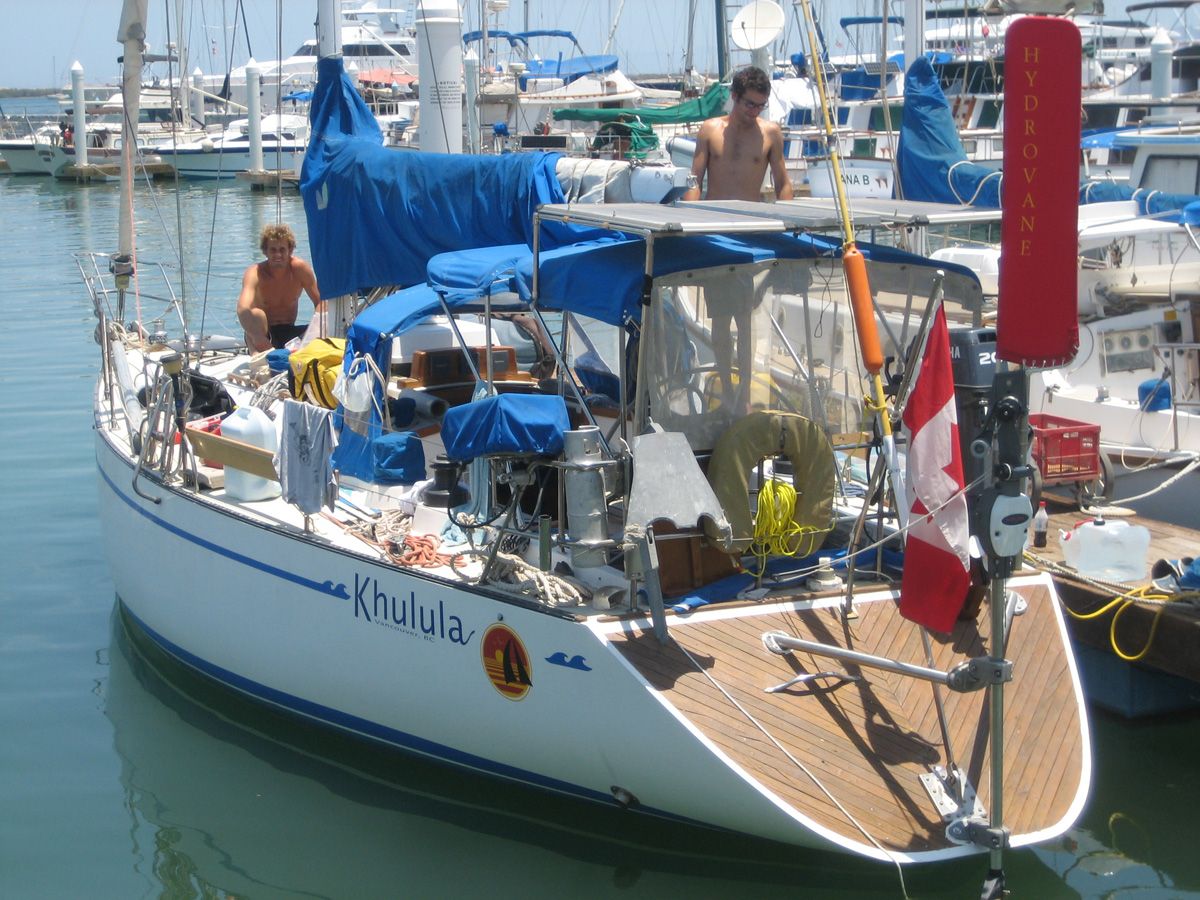
 Beneteau Idylle 11.5
Beneteau Idylle 11.5
“Initially we did not believe that Wanda could steer under these conditions, especially when the boat was surfing down really big waves…”
“…She did absolutely fine.”
From: Nello Angerilli
Sent: March-04-10 5:50 PM
To: Will Curry
Subject: RE: quick question and some comments
Hi Will
Regarding my own experience with Wanda, the first time I used the vane it was as you describe below. I set the vane, pulled the pins, and everything worked. Additional understanding of how the vane works was required in either big winds or shifting winds or really light winds. I worked those things out via an iterative process.
Our first experience with heavy weather had us in 40 kts continuous with gusts to 50. The seas were very big (regrettably a couple of really big waves broke on the boat and in the cockpit resulting in a fair amount of water down below; -(
Initially we did not believe that Wanda could steer under these conditions, especially when the boat was surfing down really big waves. However, I eventually decided to give her a try based on the “testimonial” in the owner’s manual, and she did absolutely fine. We were sailing with a triple reefed main only (the third reef is very, very deep).
Warm regards
Nello
Contact
 Oyster 406
Oyster 406
“One thing that I didn’t comment when I wrote to you in the summer was that when moving under power in a marina I didn’t notice any difference from normal with the hydrovane rudder installed.”
From: Ian
Sent: February-21-10 9:00 AM
To: John Curry
Subject: Hydrovane Rudder Pin Query
Dear John
We used our Hydrovane last year and, as I reported to you, throughout it was fantastic in ease of operation and reliability. One thing that I didn’t comment when I wrote to you in the summer was that when moving under power in a marina I didn’t notice any difference from normal with the hydrovane rudder installed. Before buying the hydrovane one of my main concerns was manoeuvring under power with the hydrovane rudder in place. As with many older boats ours is not too compliant with the helm in astern!! After a long trip across the English Channel we arrived in Cherbourg late one night in August and had problems finding a berth. With no marina staff to help this meant searching for a berth – it was pretty busy. Through all the ahead and astern in the fairways the boat handled exactly as I would expect – it was only the following morning that I realised that the Hydrovane rudder was on and locked – I hadn’t even thought about its effect at the time and it had no impact on boat handling in either ahead or astern. I couldn’t have asked for anything better! Brilliant.
However at the end of the season when I went to remove the rudder from the shaft the pin was very difficult to get out. When I eventually did get it out there were marks where the rudder had obviously been trying to turn but prevented from doing so by the pin as the shaft was locked – almost like a chattering of the rudder. We kept the rudder free when sailing but when motoring we kept the rudder locked. We had to motor on some day passages so there was quite a lot of motoring with the rudder locked and fixed. My thoughts on this are that if we are entering or leaving a port/anchorage under motor then we should lock the rudder otherwise we should allow the rudder shaft to be free even when motoring for days. Could I please have some advice from you on the best way to manage this?
Editor note: Best to lock the shaft/rudder when motoring. Add a line with a heavy duty bungee in it, tied to a cleat. This will help absorb some of the load and ease chatter.
Thanks
Regards
Ian
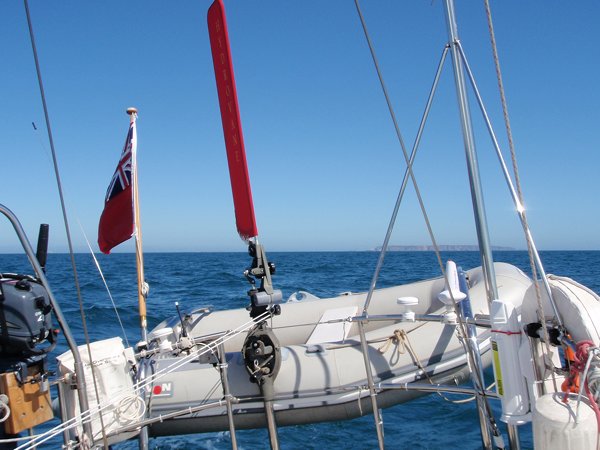
 Roberts 392
Roberts 392
“The hydrovane has been fantastic by the way, it got us all the way here from the UK, best bit of kit we bought!”
From: Paul Padfield
Sent: December-05-09 1:48 AM
To: Will Curry
Subject: Offshore spares kit
Hi Will,
I require an offshore spares kit for our hydrovane, I am in the Bay of Islands, New Zealand.
The hydrovane has been fantastic by the way, it got us all the way here from the UK, best bit of kit we bought!
Look forward to hearing from you
Paul Padfield
Contact Pacific Seacraft 40
Pacific Seacraft 40
“Winds started off quite brisk–in the 35-40 knot range, with steep beam seas (there was a counter current that pushed up the waves). The Hydrovane handled them easily all night.”
From: Sue Cross
Sent: December-22-09 7:17 AM
To: John Curry
Subject: sunset shot
Hi John
This is Sue – the other half of Bob – on Fugue, currently in Mazatlan. Thought you might be interested in a shot of our Hydrovane taken as we made the crossing from Cabo San Lucas east to Mazatlan.
Winds started off quite brisk–in the 35-40 knot range, with steep beam seas (there was a counter current that pushed up the waves). The Hydrovane handled them easily all night.
As we got to the center of the Gulf of California the winds, and finally the seas, abated to a leisurely 8-14 knots as the sun set. The Hydrovane handled these easily, too, and let me get this shot. It wasn’t until the wind fell below 5 knots that the vane began to falter. I suspect that figure would have been even lower if we weren’t compelled to have the stubby vane because of our equipment arch.
Anyway – here’s the shot. Hope you enjoy it!
Sue
Contact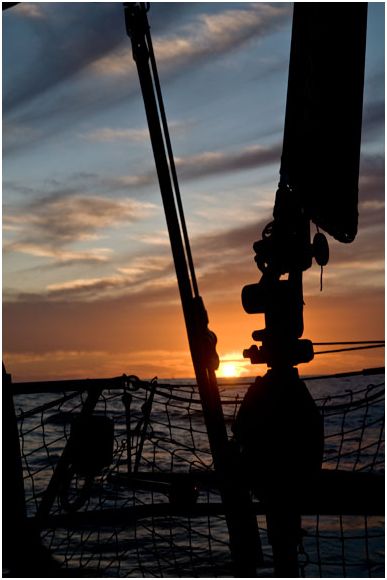
 Laurinkoster 31
Laurinkoster 31
“I’ve had very good experience with an older type of Hydrovane on my last boat – a 31’ Laurinkoster. I also attach a foto with the Hydrovane still perfect working after more than 34 years.”
From: Ola Mossberg
Sent: Monday, January 04, 2010 2:00 PM
To: Hydrovane
Subject: HR 36
Hi!
Last year we bought a Hallberg-Rassy 36 Mark II from 1995. We are planning long time sailing in a quiet near future. So we need a wind self steering.
I’ve had very good experience with an older type of Hydrovane on my last boat – a 31’ Laurinkoster. I also attach a foto with the Hydrovane still perfect working after more than 34 years. After mounting it 1979 and complement with a bigger windvane and more counterweight we set of from Stockholm on our way to South America and Caribbean. That was a fantastic feeling and the Hydrovane worked alright from the first minute. We didn´t use the tiller at all except going into port and motoring.
I bought this Hydrovane second hand 1978 and it is still in good function! Just changed some bearings and the head pipe. So to be honest I have made very good promotion during many years for your company and quality products.
So now I ask you to send me a quotation for a suitable Hydrovane. I intend to place it beside the swimming ladder – about 25 cm off centre.
Hope on a nice price including transport to Stockholm and taxes.
Best Regards!
Ola Mossberg, Stockholm, Sweden
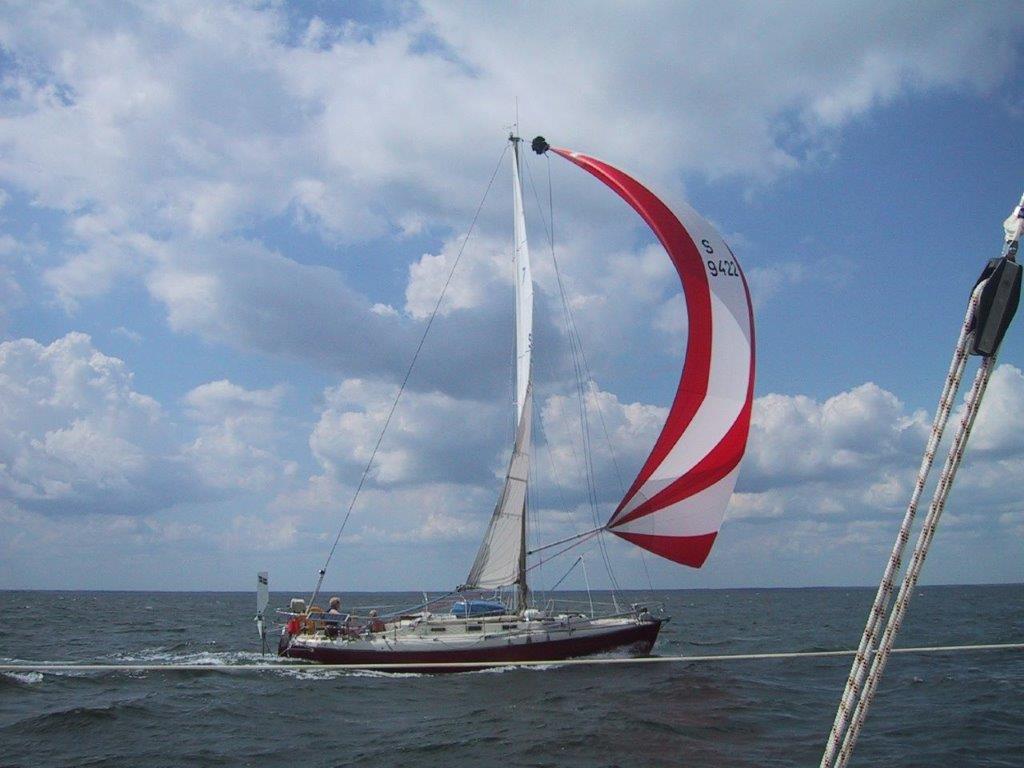
 Bavaria 36 - ARC
Bavaria 36 - ARC
“I made it safely across the Atlantic with the ARC2009 and the Hydrovane performed flawlessly.”
From: Marjan Golobic
Sent: Friday, December 18, 2009 6:21 AM
To: valerie hydrovane
Subject: H bracket
Hello Valerie,
I made it safely across the Atlantic with the ARC2009 and the Hydrovane performed flawlessly. The H bracket is now safely stowed away in my boat in the Rodney Bay marina on St. Lucia. I will be flying down to St. Lucia end of January 2010, so I am waiting for your instructions about the H-bracket.
Kind regards,
Marjan Golobic
Contact


